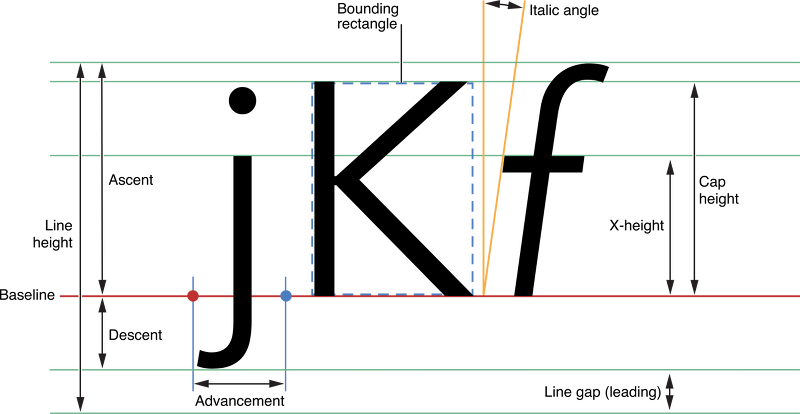Leading
Leading is the distance between the baselines of adjacent text rows. The concept appeared at a time when thin strips of lead, 2pt thick, were placed between the text lines to increase the interline space. In the metallic typing method leading was determined by the size of the letters of adjacent lines, so the change of the leading was possible only by adding a blank material (lead strips).

At present, the concept of leading has got somewhat different meaning. In modern text processors leading is composed of the size of the vertical size of the font and the distance between neighboring adjacent lines. For example, if the text is typed in 10pt, it means that its leading is 12pt (1pt is 1/72 of an inch). The task of leading is to ensure the convenience of the readability of text. Leading provides the density of the rows on the publication page. If you want to add space to the page layout or simply fill the required volume when there’s not enough text, you can resort, within reasonable limits, to increasing the leading value. The block of text becomes more easy to read and will take noticeably more space.
Negative leading is when the space between adjacent lines is smaller than the height of the characters themselves (for example, a set of text with 12pt letters with the distance between the baselines of the neighboring rows of 10pt).
Automated computer publishing systems resort to setting an automatic leading value. Calculation of the specific value of the interline space is made by the publishing computer program. The program analyzes the text of the line, selects the letter with the largest size and increases this number, usually by 20%. The value obtained will be the leading value. The amount of auto-leading can be freely changed, depending on the requirements to the appearance of the publication. On the web page leading can be set by the author (developer) or calculated automatically by the browser depending on the size and type of the font.
Recommendations for the correct choice of line spacing (leading ):
- According to the standards and for reasons of readability, leading is usually 120% of the size of the used font, so, if the text is typed in 10pt, the lead should be about 12pt. If a lower value is used, the text lines will be too tightly located, and if the leading is too large the text will look broken and not belonging to the same text block.
- Leading is affected by a lot of factors: the font type, the font size, its thickness, the length of the line, the distance between words, etc. The longer is the line, the greater must be the leading. The larger the font size, the lower is the leading. A good rule is to set the leading for 2-5pt more than the font size, depending on the font type. So if the font is 12pt, the lead should be from 14pt to 17 pt.
- The line spacing in the text is usually greater than the text size; as a rule, it’s not less than 115% of the letters. This proportion is based on the need for additional space for diacritic marks, available in many European languages. The line spacing is chosen for aesthetic reasons: the text is easier to read if there’s an empty space between the lines.
Related terms:
Baseline, Negative Space, Layout, Kerning, One Type Fonts, DPI